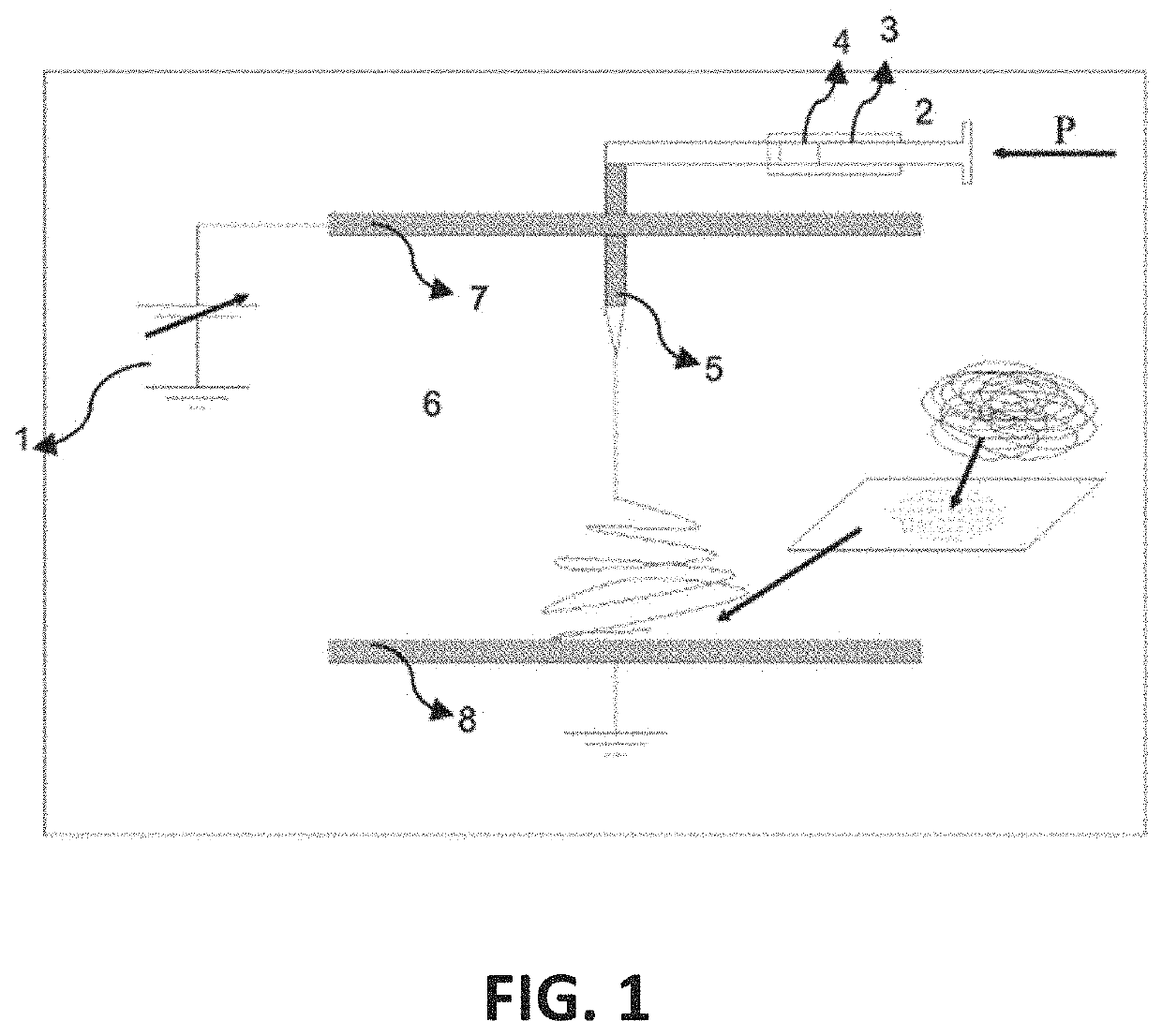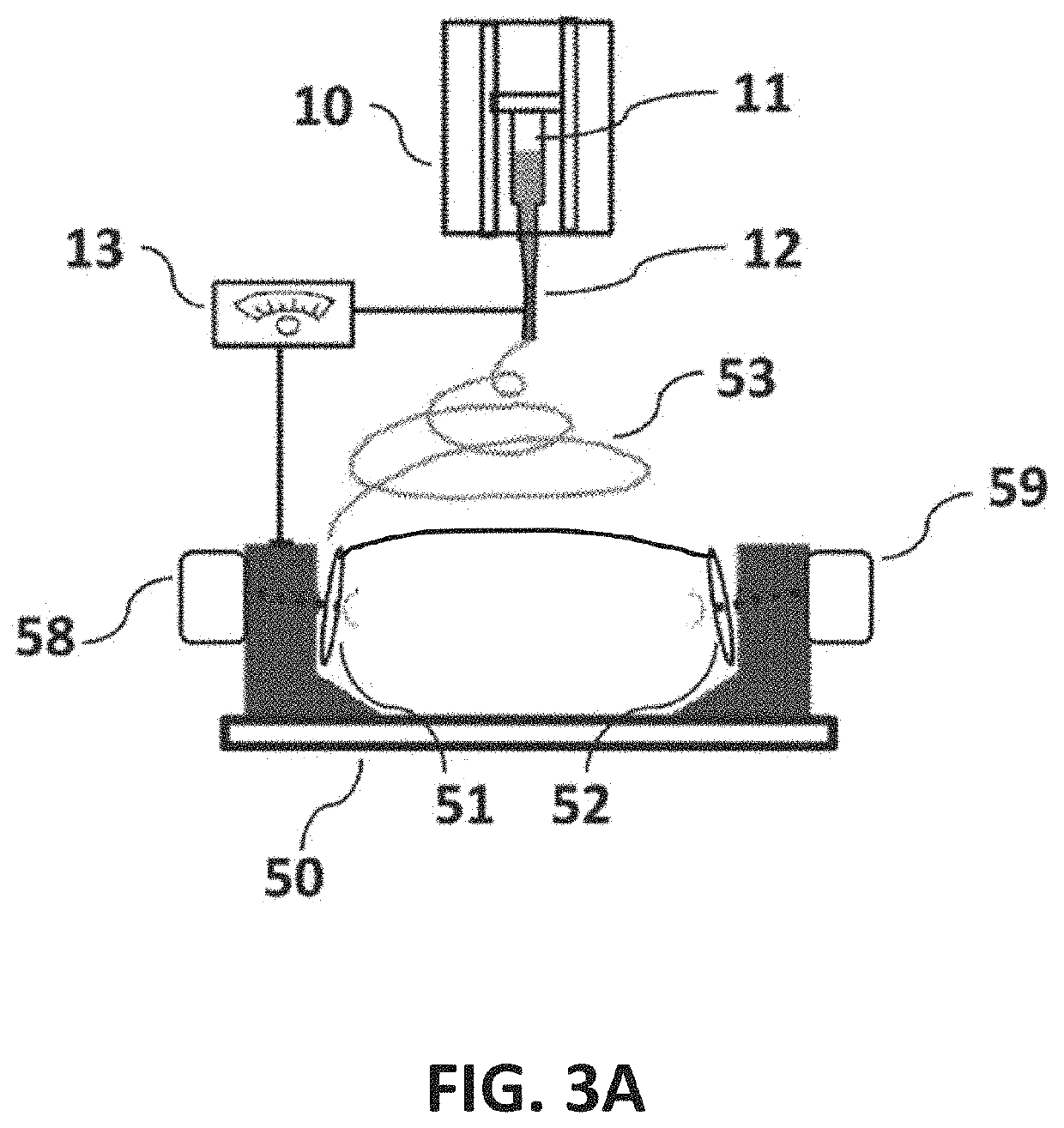Method and apparatus for accumulating cross-aligned fiber in an electrospinning device
a technology of cross-aligning fiber and electrospinning device, which is applied in the field of electrospinning, can solve the problems of limiting the fabrication of larger-size mats, the method of destruction of a first fiber layer, and the non-uniform deposition of fiber branches on the target collector, so as to achieve optimal porosity and maximize surface contact
- Summary
- Abstract
- Description
- Claims
- Application Information
AI Technical Summary
Benefits of technology
Problems solved by technology
Method used
Image
Examples
examples
[0115]The present disclosure can be better understood with reference to the following non-limiting examples.
[0116]Nanofiber scaffolding structures and aligned fibers produced using the apparatus and methods of the present invention have applications in medicine, including artificial organ components, tissue engineering, implant material, drug delivery, wound dressing, and medical textile materials. Nanofiber scaffolding structures may be used to fight against the HIV-1 virus, and be able to be used as a contraceptive. In wound healing, nanofiber scaffolding structures assemble at the injury site and stay put, drawing the body's own growth factors to the injury site. These growth factors comprise naturally occurring substances such as proteins and steroid hormones capable of stimulating cellular growth, proliferation, healing, and cellular differentiation. Growth factors are important for regulating a variety of cellular processes. By controlling scaffold structure porosity, growth f...
PUM
| Property | Measurement | Unit |
|---|---|---|
| electrically chargeable | aaaaa | aaaaa |
| electrically | aaaaa | aaaaa |
| conductive | aaaaa | aaaaa |
Abstract
Description
Claims
Application Information
 Login to View More
Login to View More - R&D
- Intellectual Property
- Life Sciences
- Materials
- Tech Scout
- Unparalleled Data Quality
- Higher Quality Content
- 60% Fewer Hallucinations
Browse by: Latest US Patents, China's latest patents, Technical Efficacy Thesaurus, Application Domain, Technology Topic, Popular Technical Reports.
© 2025 PatSnap. All rights reserved.Legal|Privacy policy|Modern Slavery Act Transparency Statement|Sitemap|About US| Contact US: help@patsnap.com



